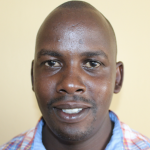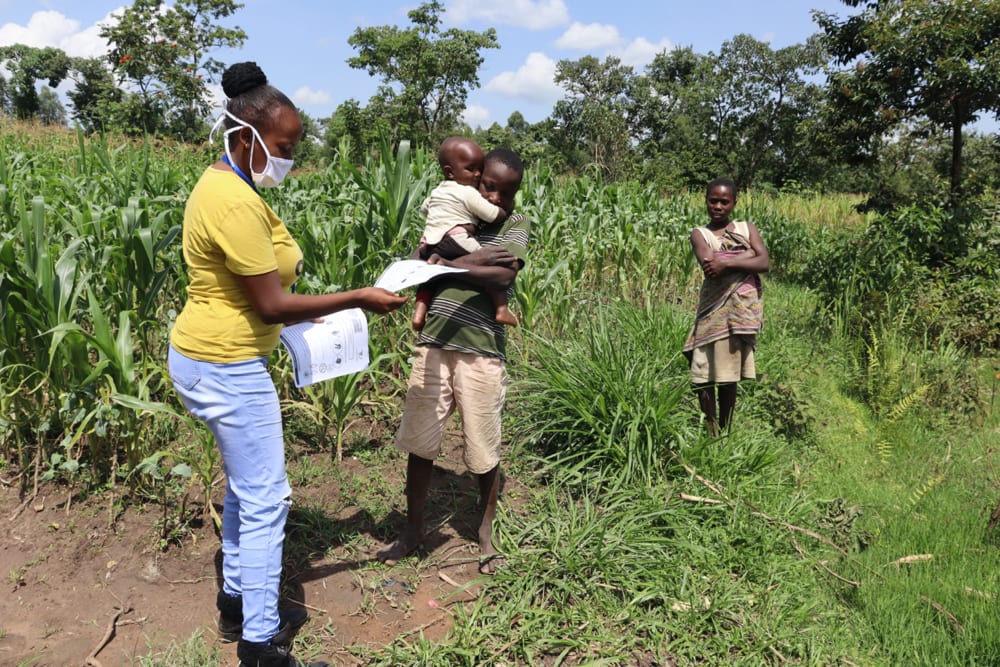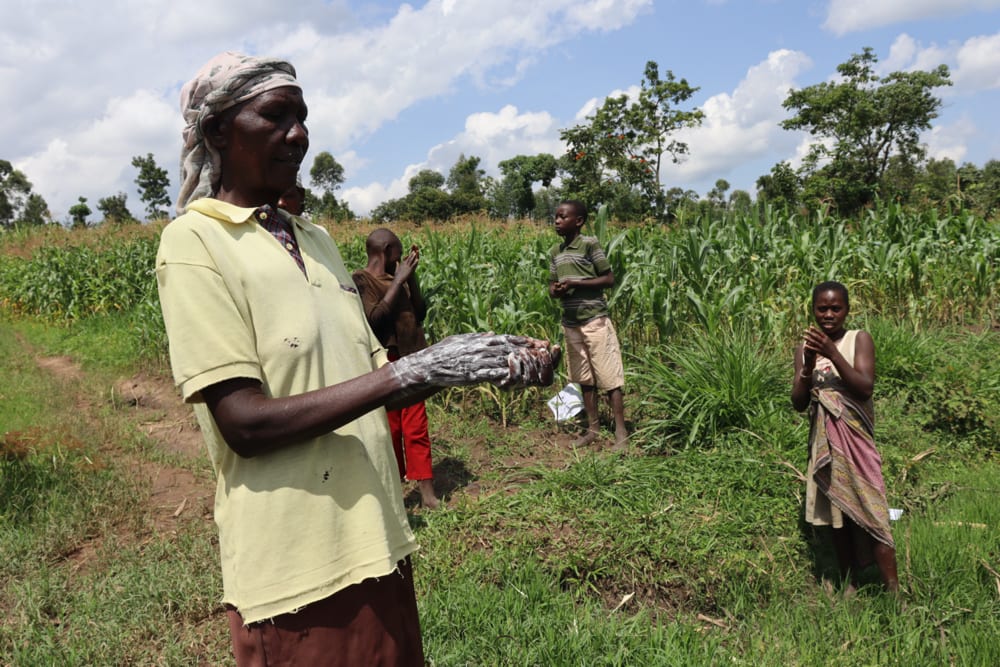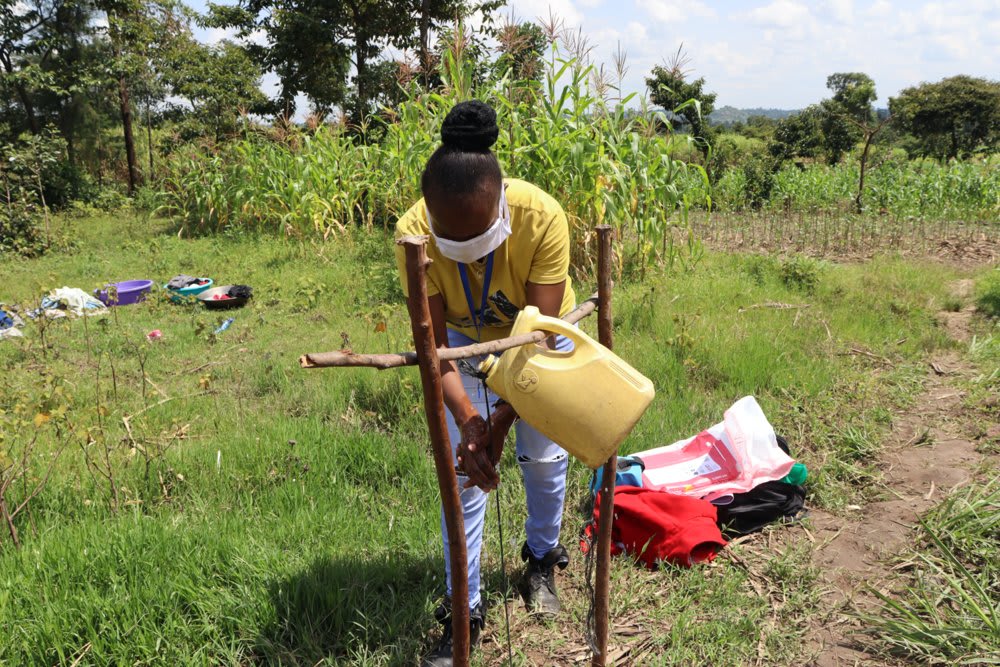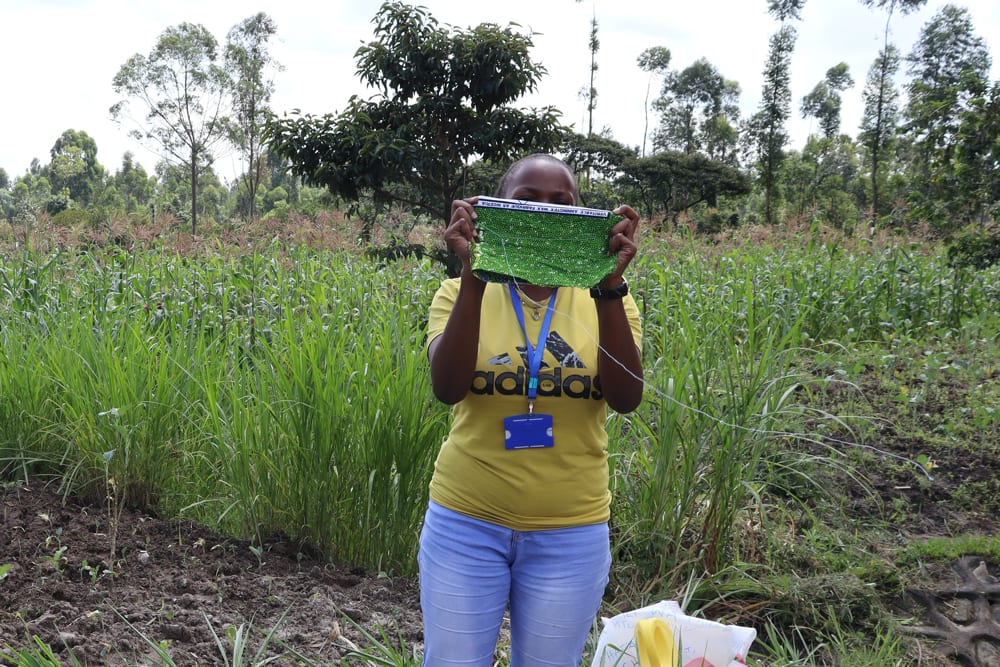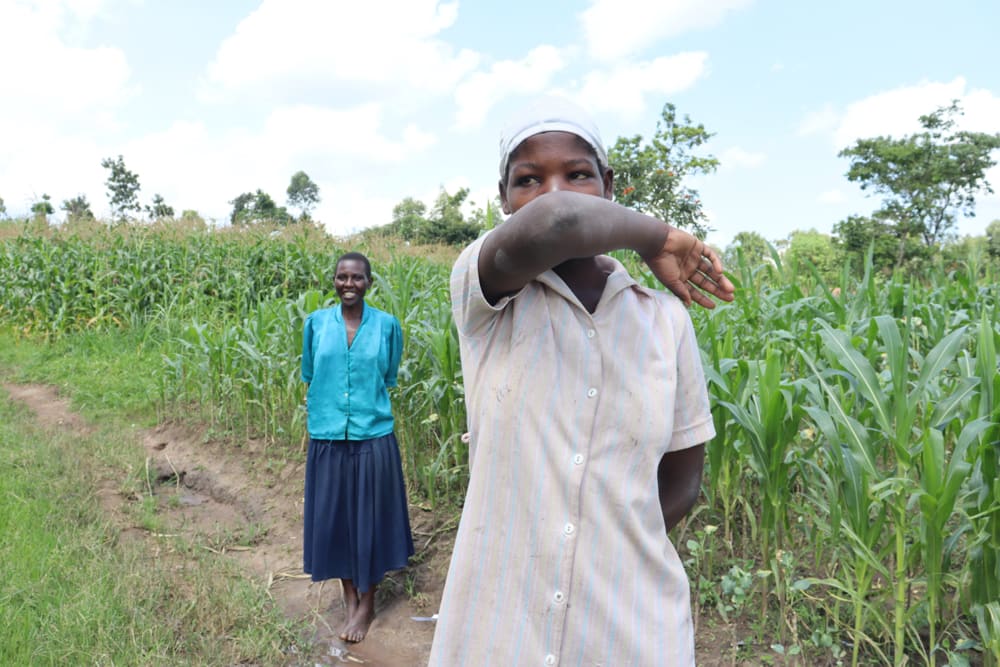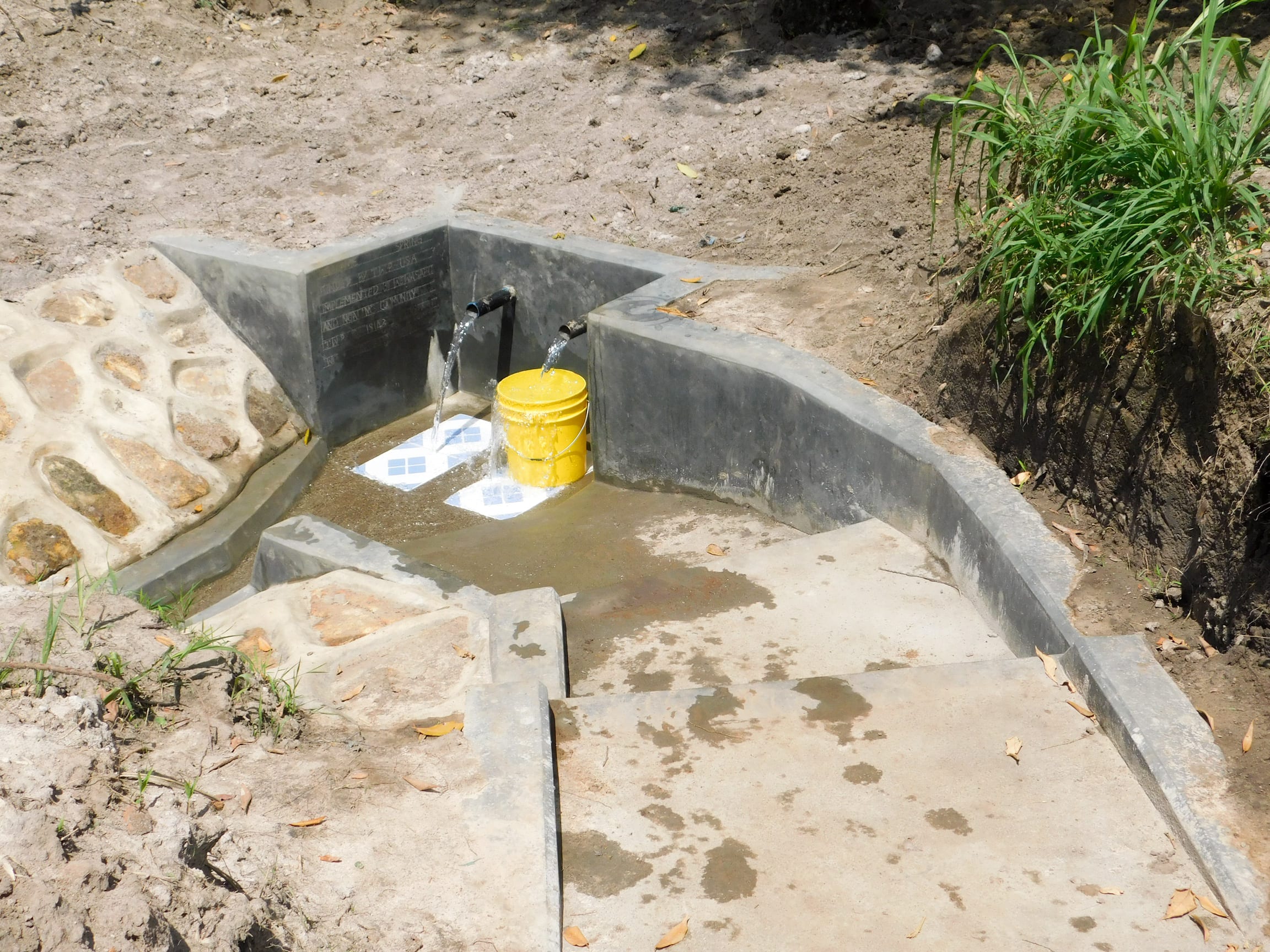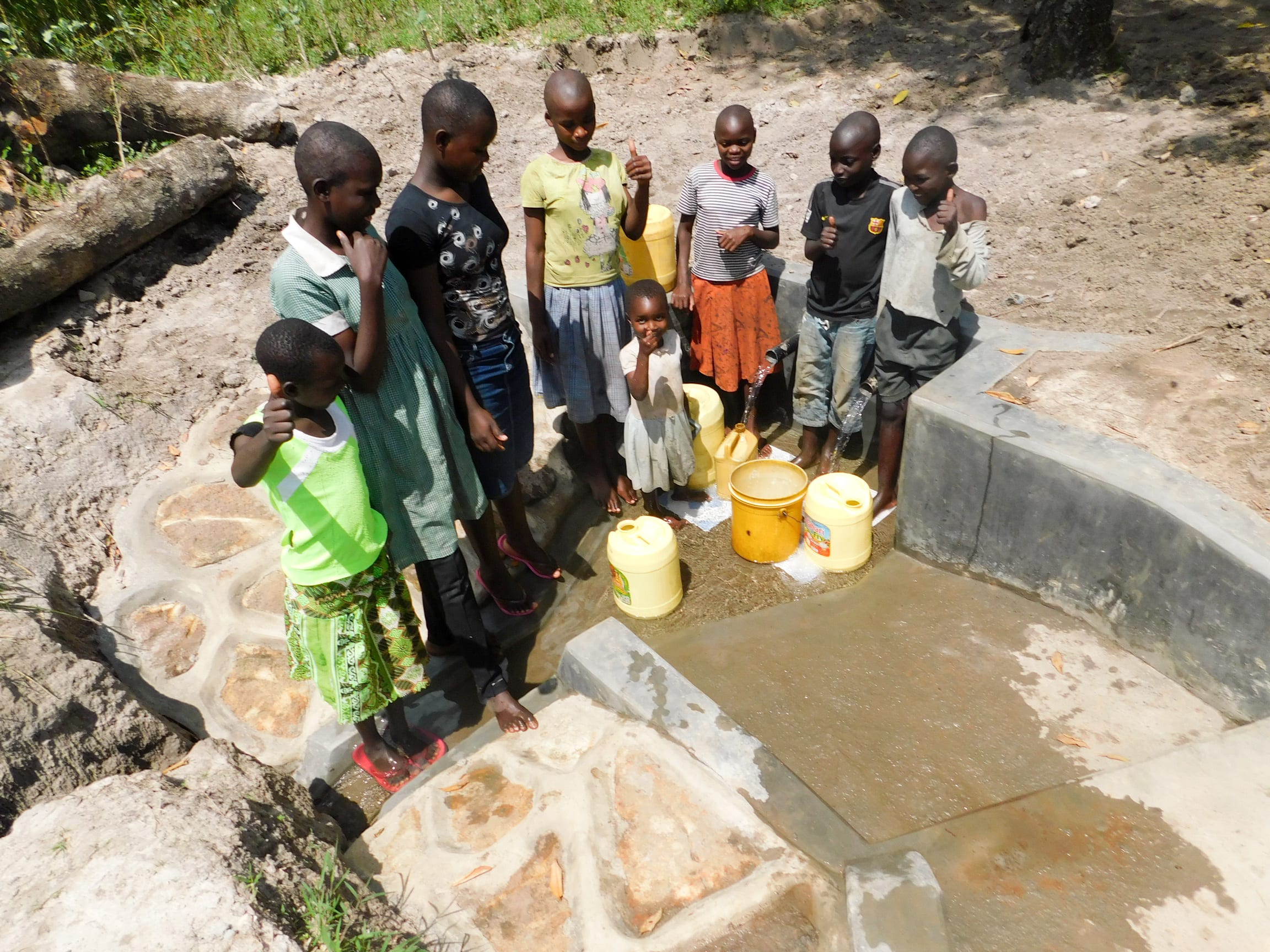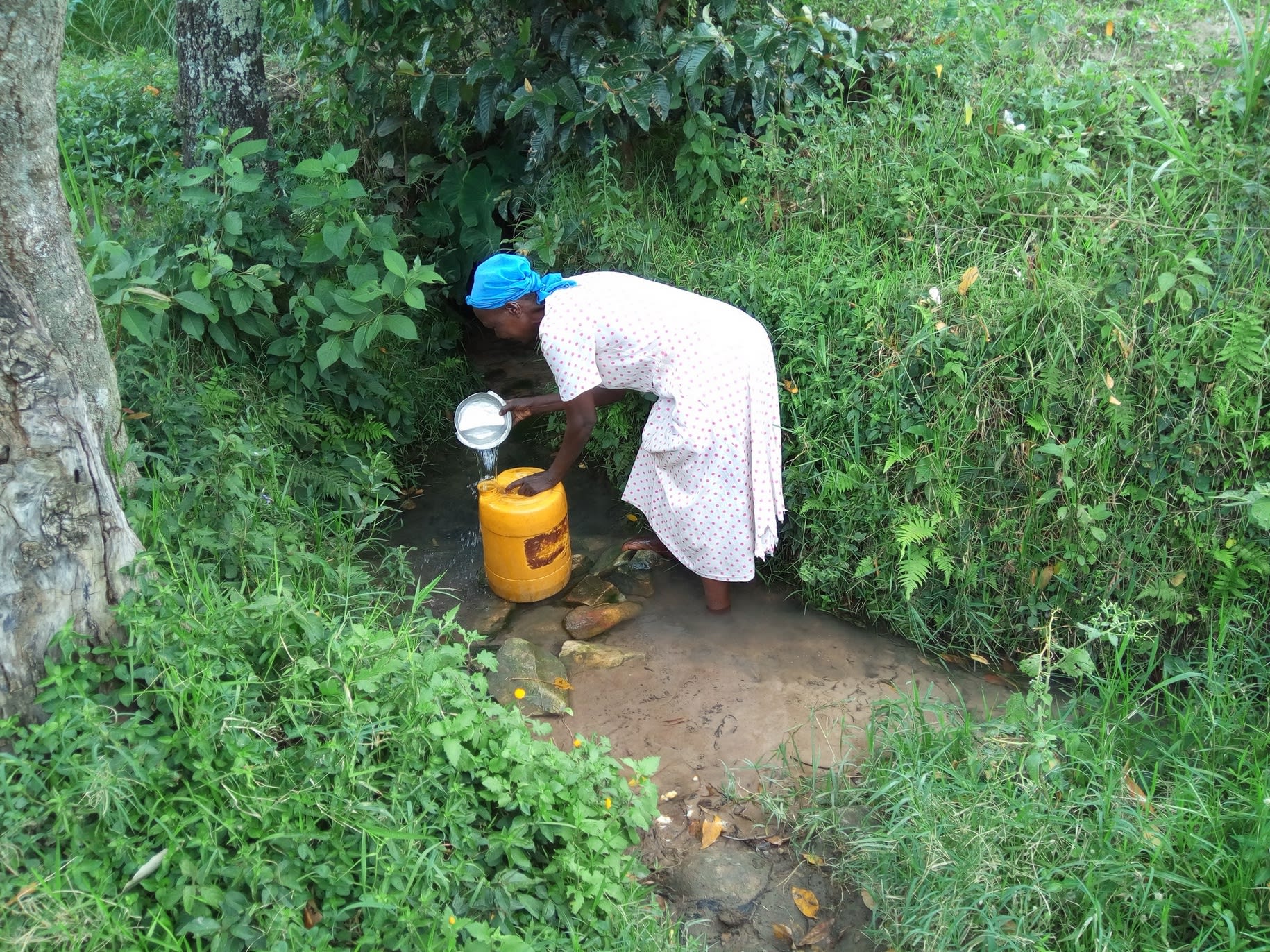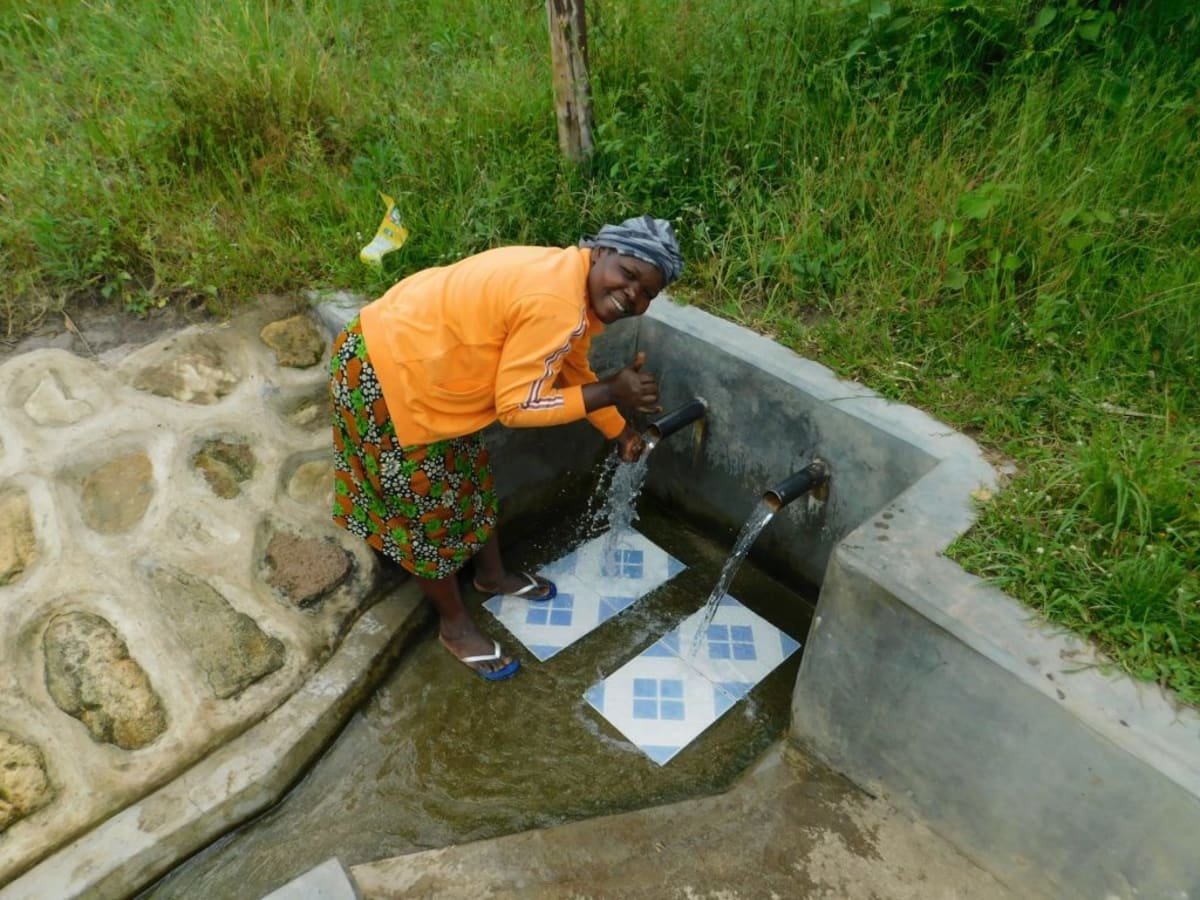Ngalame Spring is located in Muyundi Village at the farthest end of Kakamega County, bordering Bungoma County.
A normal day in Muyundi Village starts very early in the morning. Residents wake up at 5:30am for different chores. Women prepare breakfast for the whole family before engaging in their routine work. Children prepare themselves for school and men take time grazing their cattle.
Stepping into Muyundi Village at around 10am, you are welcomed by community members busy tilling their land, planting crops, weeding, and harvesting.
Water
The spring is a permanent open water source which is high yielding and serves more than 300 people. It doesn't go dry, even in the driest seasons of the year, Mr. Abraham Ngalame said.
We found some women carrying water on their heads while walking back from a baseline survey at nearby Baraza's Spring. We asked the women where they fetched the water. One of them told us that they had fetched it from Ngalame Spring which is unprotected.
We saw that community members come with their containers to the open water source. They plunge the containers into the water to fill with the water until the containers are half or three-quarters full. They remove the containers and fill the remaining space by scooping the water with smaller jugs.
The gathered water is stored in the same container or a larger one, at homes.
The water source is absolutely contaminated. Simply because of its open nature and the human activities that range from stepping into the water source to plunging dirty containers into the source.
"We have suffered a lot after using water from this unprotected source. Most of our resource usually go to medication to treat waterborne diseases like typhoid, which is rampant," Mr. Ngalame said.
Sanitation
More than half of homes have pit latrines. Theys are made of mud wall, wooden log floors, and roofed with iron sheet. Some have doors while most do not.
We found other forms of sanitation facilities in homes without latrines, like dishracks and clotheslines. That indicates that people are open to taking steps towards improving the hygiene and sanitation status of their homes.
Here’s what we’re going to do about it:
Training
Community members will attend hygiene and sanitation training for at least two days. This training will ensure participants have the knowledge they need about healthy practices and their importance. The facilitator plans to use PHAST (Participatory Hygiene and Sanitation Transformation), CLTS (Community-Led Total Sanitation), ABCD (Asset-Based Community Development), group discussions, handouts, and demonstrations at the spring. One of the most important topics we plan to cover is the handling, storage, and treatment of water. Having a clean water source will be extremely helpful, but it is useless if water gets contaminated by the time it’s consumed. Handwashing will also be a big topic.
Training will also result in the formation of a committee that will oversee operations and maintenance at the spring. They will enforce proper behavior around the spring and delegate tasks that will help preserve the site, such as building a fence and digging proper drainage. The fence will keep out destructive animals, and the drainage will keep the area’s mosquito population at a minimum.
Sanitation Platforms
On the final day of training, participants will select five families that should benefit from new latrine floors.
Training will also inform the community and selected families on what they need to contribute to make this project a success. They must mobilize locally available materials, such as bricks, clean sand, hardcore, and ballast. The five families chosen for sanitation platforms must prepare by sinking a pit for the sanitation platforms to be placed over. All community members must work together to make sure that accommodations and food are always provided for the work teams.
Spring Protection
Protecting the spring will ensure that the water is safe, adequate and secure. Construction will keep surface runoff and other contaminants out of the water. With the community’s high involvement in the process, there should be a good sense of responsibility and ownership for the new clean water source.
Fetching water is predominantly a female role, done by both women and young girls. Protecting the spring and offering training and support will, therefore, help empower the female members of the community by giving them more time and efforts to engage and invest in income-generating activities.

 Protected Spring
Protected Spring
 Rehabilitation Project
Rehabilitation Project













